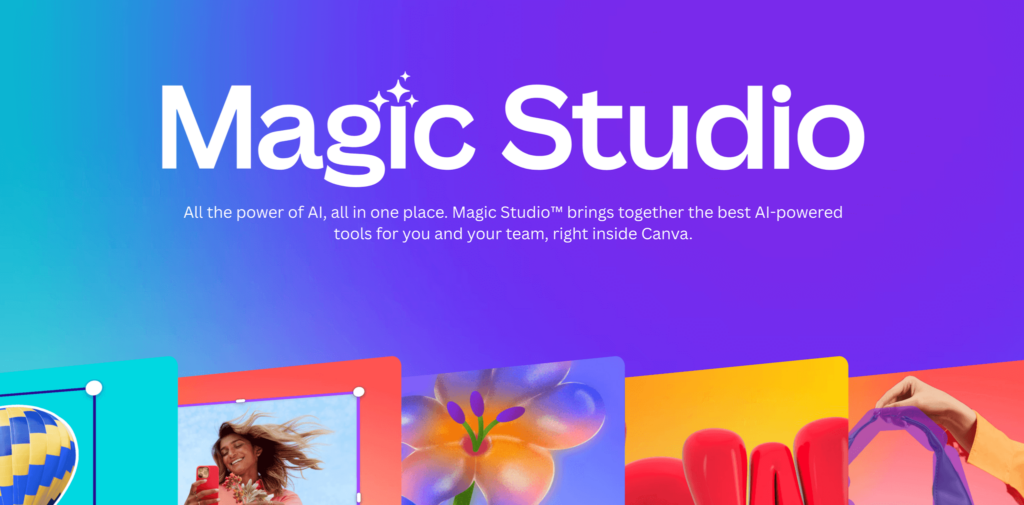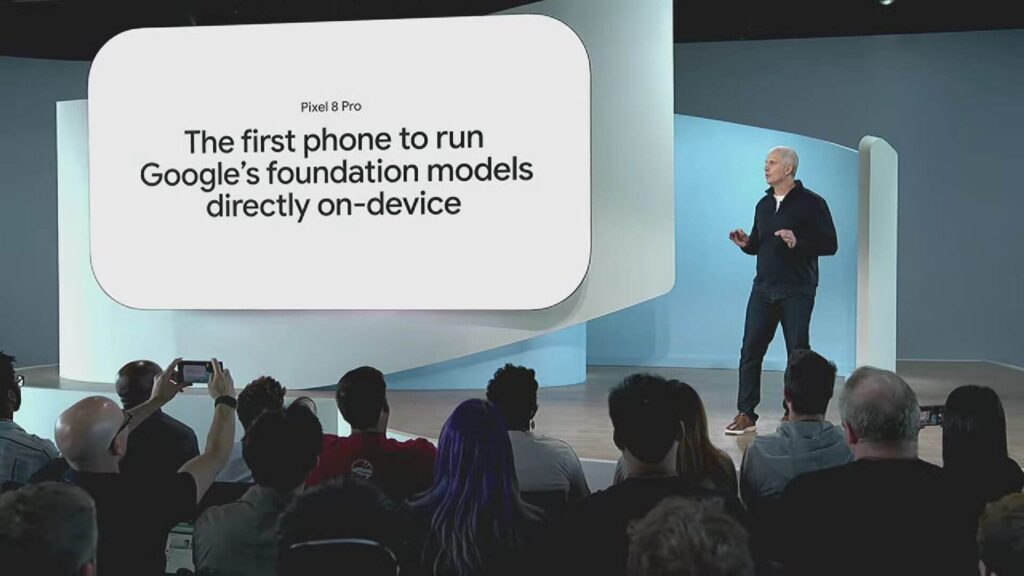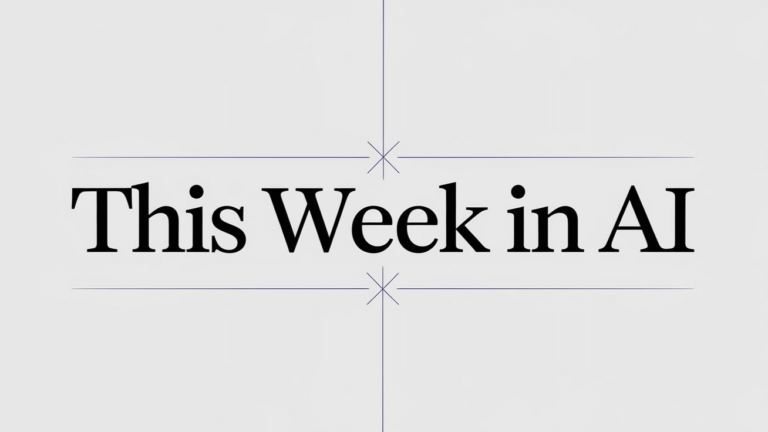01: Canva Brings the Magic

Canva, known for its simple yet powerful graphic design tools, has unveiled its newest creation: Magic Studio. This innovative AI-backed feature-set is ready to take on Adobe and the other titans in the ring, and they went all out with their release last week.
Magic Studio is Canva’s latest endeavor to make design intuitive and interactive. At its core, Magic Studio is about bringing your creative visions to life with minimal effort.
- Magic Cut: Say goodbye to tedious manual cropping. Magic Cut identifies and removes the background of any photo in seconds, allowing you to focus on creating.
- Magic Style: With just a click, transform the look and feel of your designs. Whether you’re aiming for a vintage aesthetic, a modern touch, or anything in between, Magic Style has got you covered.
- Magic Templates: Dive into a library of customizable templates. Whether you’re designing presentations, social media posts, or print materials, there’s a template that fits your needs.
- Magic Fonts: Typography is crucial in design, and Magic Studio understands that. Access pairing of unique fonts and styles to make your designs stand out.
- Integration with Canva’s Library: Tap into Canva’s library of over 150 million premium stock photos, videos, audio, and graphics to elevate your designs.
For small business owners, the challenge has always been to stand out in a crowded marketplace without breaking the bank. Visual branding and content play a crucial role in capturing customer attention. Still, only some entrepreneurs can access a professional design team or the skills to create compelling visuals themselves.
Enter Magic Studio. This tool empowers small businesses to elevate their brand presence, ensuring that they can produce designs that resonate and engage even with limited resources.
The platform embodies Canva’s mission of democratizing design, and as the digital world becomes increasingly visual-centric, tools like Magic Studio are proving to be another leap forward.
02: Curated AI Tweets

I am often asked how I keep up with the constantly changing tech industry for AI news. One secret weapon of mine? Expertly curated Twitter lists by one of my favorite technologists, Robert Scoble. It’s not just about following accounts, but about following *the right* accounts, and there’s no one better than Robert.
Here are his top ten:
- AI Artists 🔗
- AI Companies & Orgs 2023 🔗
- AI Education 🔗
- AI Enterprise or Work 🔗
- AI Holodeck 🔗
- AI Medical/Healthcare 🔗
- AI Music/Audio 🔗
- AI Real Estate 🔗
- AI Tools for Developers 🔗
- AI Writing or Marketing 🔗
These lists (and his others) are a goldmine for anyone looking to have their finger on the pulse of the tech world.
Do you have a favorite method for keeping up with AI and tech news? Share it with me—I’m always looking to expand my options!
03: Pixel-Perfect AI

The release of Google’s Pixel 8 is quickly shaking up the smartphone world. Not because it’s just another device in the lineup but due to its remarkable integration of AI. Pixel 8’s AI-centric approach undoubtedly sets it apart. Here’s a roundup of some of my favorite features:
Streamlining Communication
The Pixel 8 emphasizes effortless communication. Its AI Call Assistant – Call Screen feature is huge for those weary of spam calls. Google Assistant now screens and identifies these interruptions. Meanwhile, the Gboard Upgrade enhances everyday typing. This AI-powered keyboard suggests phrasing options, ensuring your messages, emails, or posts give the intended tone.
Redefining Multimedia
Magic Editor makes photo editing effortless by removing large objects or shadows. Photos that once seemed ruined by blurriness are fixed with Photo Unblur, as AI works to reconstruct missing pixels. Videos also get a boost with the Audio Magic Eraser, which isolates and mutes distracting background noises. And for those who love capturing the perfect moment, Top Shot utilizes AI to select the best image from a burst of photos.
Enhancing Web Interactions & Creativity
Web Page Summaries quickly clarify the essence of web content, letting users get their info faster. And on the creative front, Assistant with Bard brings the Bard language model to Google Assistant. This feature is not just about answering questions; it’s a tool for generating a range of creative text formats, from poems to scripts.
With the Pixel 8, Google showcases how AI can be both a functional tool and a transformative smartphone experience. As AI’s footprint in our devices grows, the line between functionality and innovation becomes increasingly blurred.
The question then arises: What do we want our devices to achieve for us next in this evolving landscape?
